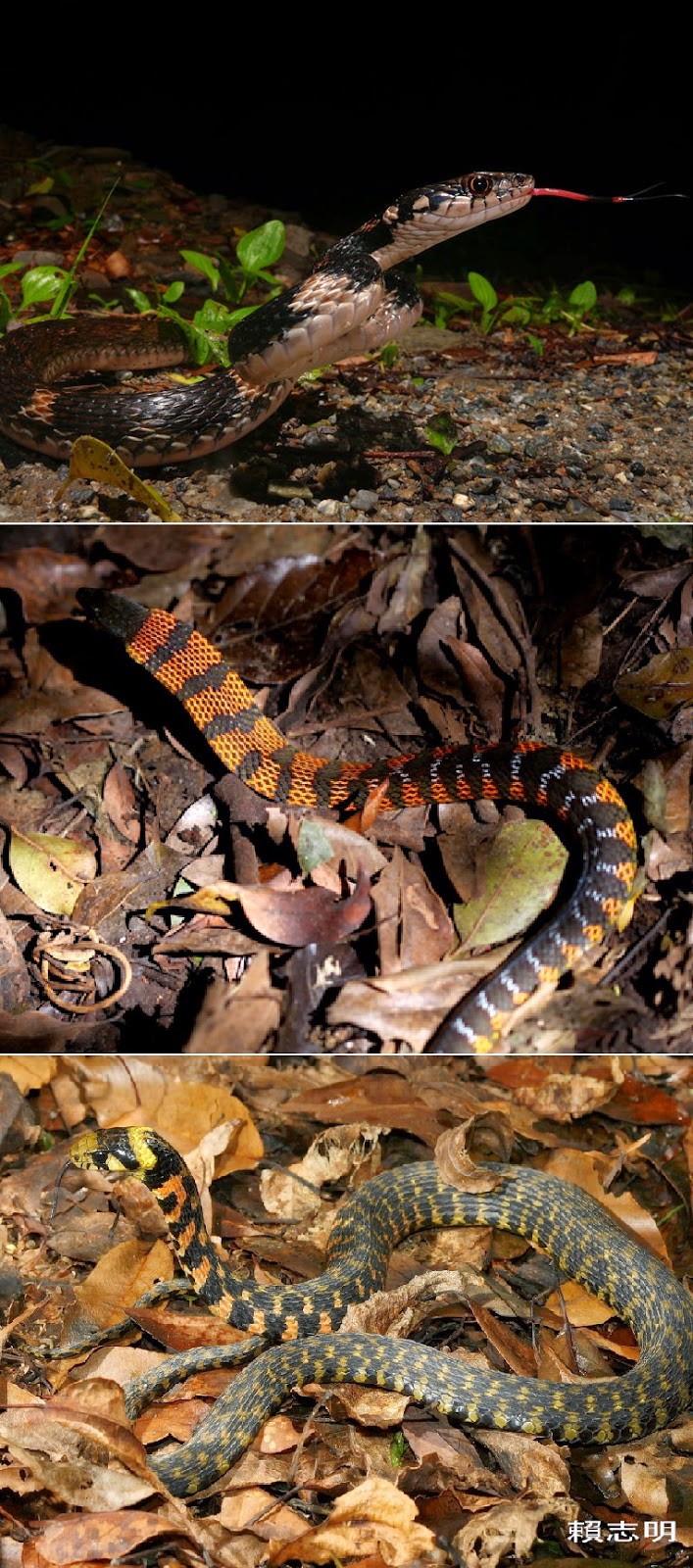| An adult male Taricha granulosa in breeding condition. There is enough tetrodotoxin in this newt to kill you and about 29 other people. |
Gartersnakes eat newts. I mentioned this remarkable fact in my article on the Scientific American Guest Blog, but it's interesting enough to warrant a more detailed treatment. In 1990, Edmund D. Brodie III and his father, Edmund D. Brodie Jr, published a paper in the journal Evolution that provided the first evidence of a pair of species in a highly coupled arms race. Previously, the concept of an arms race had been criticized because the potential cost to the prey (loss of life) was perceived as more dire than the potential cost to the predator (merely the loss of dinner). This imbalance, known as the life-dinner principle, led scientists to suggest that tightly co-evolving arms races between predators and prey could not exist, because selection pressure on the predator would always be less than that on the prey. However, reasoned Brodie & son, if the prey's defenses are lethal, then selection might be equally strong on both predator and prey, because only highly resistant predators could survive a predation event. This is the case in the predator-prey dynamic between the Rough-skinned Newt (Taricha granulosa) and the Common Gartersnake (Thamnophis sirtalis), which is centered around a toxin called tetrodotoxin.
 |
| Chemical structure of tetrodotoxin |
 |
| Map of gartersnake resistance to tetrodotoxin Outside of the range of the Rough-skinned Newt, gartersnakes have essentially no resistance. Figure from Brodie Jr. et al 2002 |
 |
| Three species of TTX-resistant snakes: top: Amphiesma pryori middle: Erythrolamprus epinephelus bottom: Rhabdophis tigrinus |
| Common Gartersnake (Thamnophis sirtalis) from Oregon's Willamette Valley, where newt toxicity and snake resistance are both at their peak |
There's much left to discover about this system, which is perhaps one of the most interesting in snake biology. Where are newts getting tetrodotoxin from? How many other times has TTX resistance evolved in snakes, and has it happened the same way every time? To what extent are gartersnakes using newt-derived TTX to protect against their own predators? Someday, we will find out.
ACKNOWLEDGMENTS
Thanks to current and former members of the Brodie lab, especially Dr. Edmund D. "Doc" Brodie Jr., for discussing this system with me over the last three years.
REFERENCES
Brodie Jr, E. D. 1968. Investigations on the skin toxin of the adult rough-skinned newt, Taricha granulosa. Copeia 1968:307-313 <link>
Brodie III, E. and E. Brodie Jr. 1999. Costs of exploiting poisonous prey: evolutionary trade-offs in a predator-prey arms race. Evolution 53:626-631 <link>
Brodie III, E. and E. Brodie Jr. 1999. Costs of exploiting poisonous prey: evolutionary trade-offs in a predator-prey arms race. Evolution 53:626-631 <link>
Brodie III, E., C. Feldman, C. Hanifin, J. Motychak, D. Mulcahy, B. Williams, and E. Brodie Jr. 2005. Parallel arms races between garter snakes and newts involving tetrodotoxin as the phenotypic interface of coevolution. Journal of Chemical Ecology 31:343-356 <link>
Geffeney, S., E. Brodie Jr, P. Ruben, and E. Brodie III. 2002. Mechanisms of adaptation in a predator-prey arms race: TTX-resistant sodium channels. Science 297:1336-1339 <link>
Geffeney, S., E. Fujimoto, E. Brodie, and P. Ruben. 2005. Evolutionary diversification of TTX-resistant sodium channels in a predator–prey interaction. Nature 434:759-763 <link>
Hanifin, C. T. and E. D. Brodie Jr. 2008. Phenotypic mismatches reveal escape from arms-race coevolution. PLoS Biology 6:e60 <link>
Feldman, C. R., E. D. Brodie, and M. E. Pfrender. 2012. Constraint shapes convergence in tetrodotoxin-resistant sodium channels of snakes. Proceedings of the National Academy of Sciences 106:13415-13420 <link>
Geffeney, S., E. Brodie Jr, P. Ruben, and E. Brodie III. 2002. Mechanisms of adaptation in a predator-prey arms race: TTX-resistant sodium channels. Science 297:1336-1339 <link>
Geffeney, S., E. Fujimoto, E. Brodie, and P. Ruben. 2005. Evolutionary diversification of TTX-resistant sodium channels in a predator–prey interaction. Nature 434:759-763 <link>
Hanifin, C. T. and E. D. Brodie Jr. 2008. Phenotypic mismatches reveal escape from arms-race coevolution. PLoS Biology 6:e60 <link>
Feldman, C. R., E. D. Brodie, and M. E. Pfrender. 2012. Constraint shapes convergence in tetrodotoxin-resistant sodium channels of snakes. Proceedings of the National Academy of Sciences 106:13415-13420 <link>
Stokes, A. N., P. K. Ducey, L. Neuman-Lee, C. T. Hanifin, S. S. French, M. E. Pfrender, E. D. Brodie, III, and E. D. Brodie Jr. 2014. Confirmation and distribution of tetrodotoxin for the first time in terrestrial invertebrates: two terrestrial flatworm species (Bipalium adventitium and Bipalium kewense). PLoS ONE 9:e100718 <link>
Williams, B. L. and R. L. Caldwell. 2009. Intra-organismal distribution of tetrodotoxin in two species of blue-ringed octopuses (Hapalochlaena fasciata and H. lunulata). Toxicon 54:345-353 <link>
Williams, B. L., E. D. Brodie Jr., and E. D. Brodie III. 2004. A resistant predator and its toxic prey: persistence of newt toxin leads to poisonous (not venomous) snakes. Journal of Chemical Ecology 30:1901-1919 <link>
Williams, B. L. and R. L. Caldwell. 2009. Intra-organismal distribution of tetrodotoxin in two species of blue-ringed octopuses (Hapalochlaena fasciata and H. lunulata). Toxicon 54:345-353 <link>
Williams, B. L., E. D. Brodie Jr., and E. D. Brodie III. 2004. A resistant predator and its toxic prey: persistence of newt toxin leads to poisonous (not venomous) snakes. Journal of Chemical Ecology 30:1901-1919 <link>
Life is Short, but Snakes are Long by Andrew M. Durso is licensed under a Creative Commons Attribution-NonCommercial-NoDerivs 3.0 Unported License.
